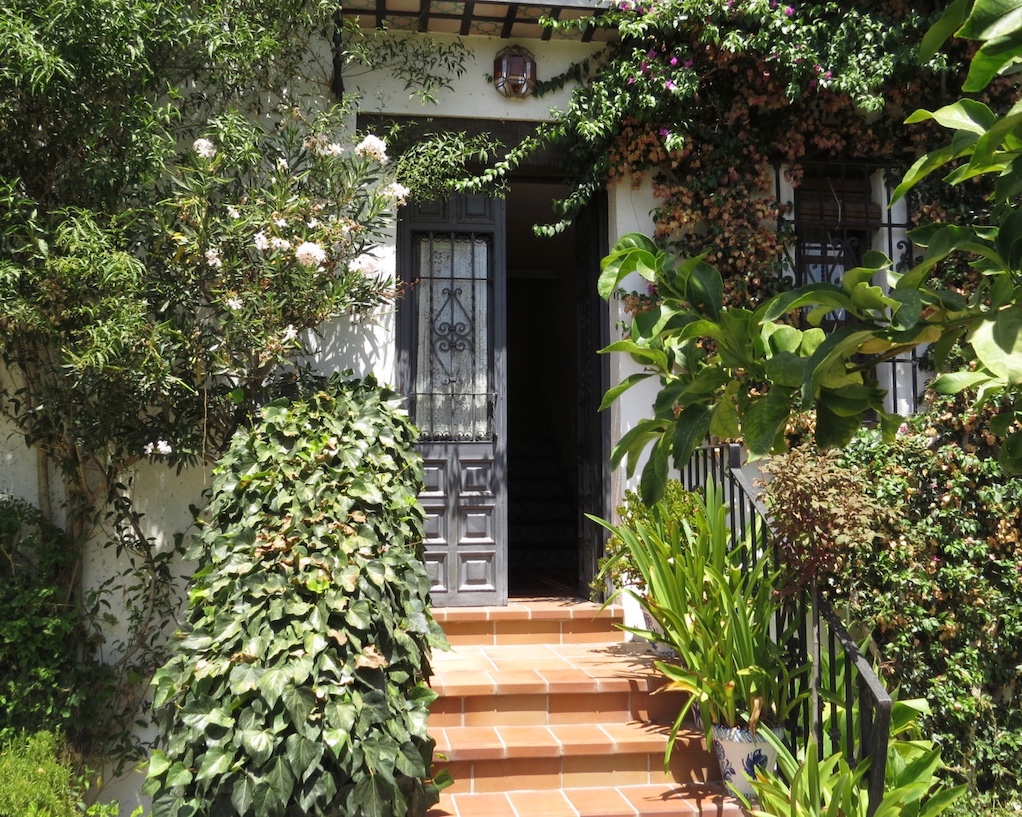The Nature and History of the Carmen in Granada

We are often asked by clients considering buying a property in Granada, about the meaning of the word carmen. It is a term in common usage in the city and is used widely on our websites but its meaning is specific to Granada, a city steeped in history and culture. A carmen is an urban property, a synthesis of house, garden and vegetable plot, rooted in Granada’s past. To understand the carmen is to delve into the layers of history, language, and urban transformation that have shaped the city’s identity.
The Origin of the Word “Carmen”
The word ‘carmen’ has Arabic origins deriving from the Arabic word ‘karm’ meaning ‘vine’. Carmens have (or traditionally had) a bower providing shade to the entrance of the house. Symbolically speaking ‘karm’ means ‘orchard’. In a carmen, the concepts of orchard and garden come together, creating a particular paradise where the five senses can be enjoyed to the full: the sight and smell of trees and flowers, the taste of fruit, the feel of water running through the hands, the sound of the birds that live in the branches and the murmur of the fountains. High walls protect the interior space from view. Water is a fundamental element in a carmen. It is a symbol of life; on the one hand calm water, contained in pools, and on the other hand dynamic water running through fountains. These walled properties not only provide practical benefits, such as shade and privacy, but also embody a cultural ideal of tranquility and aesthetic refinement deeply rooted in the history of Al-Andalus, the area governed for almost seven hundred years by Moorish invaders from North Africa and which, at its height, covered most of the Iberian peninsula. Granada was the last bastion of Islamic rule.
The Essence of the Carmen
The carmen combines domestic architecture with lush gardens enclosed by high walls. This spatial arrangement creates a secluded, paradisiacal refuge within the bustling city. Historically, these spaces served as both private retreats and social hubs, encapsulating aesthetic ideals. The interplay of vegetation, architecture, and the surrounding urban landscape defines the carmen as a microcosm of Granada's historical evolution.
Historical Roots
The origins of the carmen in Granada can be traced back to the Moorish period, when Islamic architectural and horticultural principles shaped the urban fabric of the city. Influenced by the Quranic vision of paradise as a lush garden, Moorish builders and gardeners created spaces that integrated water features, fruit trees, and ornamental plants into private and public domains. These gardens were not only places of leisure and contemplation but also reflected an advanced understanding of irrigation and microclimate management.
After the Christian Reconquest at the end of the 15th century, the tradition of the carmen persisted, adapting to new architectural styles and cultural influences. Renaissance and Baroque elements began to merge with Islamic aesthetics, resulting in unique hybrids that defined Granada’s urban landscape. The carmen became a lasting symbol of the city’s layered cultural heritage.
Cultural Significance
Carmens were more than mere residences; they were expressions of identity and status. The enclosed gardens symbolised privacy and exclusivity, while their intricate layouts and lush vegetation reflected the owner’s taste and connection to nature. These spaces also served practical purposes, such as growing fruit and vegetables, providing shade, and creating microclimates that tempered Granada’s hot summers.
The carmen’s aesthetic appeal and cultural importance has inspired poets, writers, and artists for centuries. These idyllic spaces often appear in literary works as metaphors for paradise or as settings for romantic and philosophical musings. The carmen’s ability to encapsulate a sense of timeless beauty and seclusion has made it a recurring motif in Andalusian culture.
Challenges of Preservation
The 20th century brought significant changes to Granada’s urban landscape. Many carmens were lost to urbanisation, while others underwent transformations that altered their original character. Yet more were abandoned and left to ruin, as living in the historic areas of the Albayzin and Realejo lost part of their charm. The difficulty of access along narrow roads and pathways designed for human and animal, often with long series of steps were increasingly seen as undesirable by a car owning populace. Given the large size of most carmens, maintenance and renovation have become a burden for owners. Most often funds for renovation have come from people who are not resident in the city, people who believe the benefits of living in a carmen far outweigh the inconvenience.
The Carmen as a Living Heritage
Today, the carmen remains a symbol of Granada’s cultural and historical identity. Initiatives to preserve these spaces underscore their unique synthesis of architecture and nature. Many carmens have been restored and some are now open to the public, allowing visitors to witness their beauty and tranquility firsthand. These efforts ensure that the carmen continues to be a vital part of Granada’s urban fabric, bridging the past and the present.


